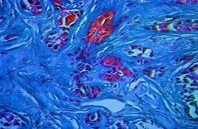Not all cancerous tumors respond equally to treatments and therapy, which complicates treatment regimes for clinicians and outcomes for patients.
A project at the University of Arkansas and Johns Hopkins University has now used Raman spectroscopy to reveal differences between those tumors which responded to treatment and tumors which were more resistant, potentially offering a route to distinguishing between the two types early in the therapeutic regime.
Having been tested on human cancer cells transplanted into subject mice, pilot clinical studies in human patients with head and neck cancer will now follow, to determine if the technique can remove the need for ineffective radiation therapy in some cases. The research was published in Cancer Research.
The group used Raman spectroscopy to map biomolecular changes in radiation-resistant and radiation-sensitive human lung tumors, along with two different types of head and neck tumors.

 (585) 768-2513
(585) 768-2513

